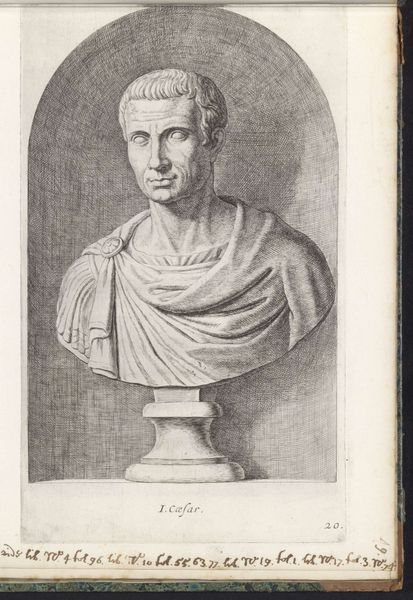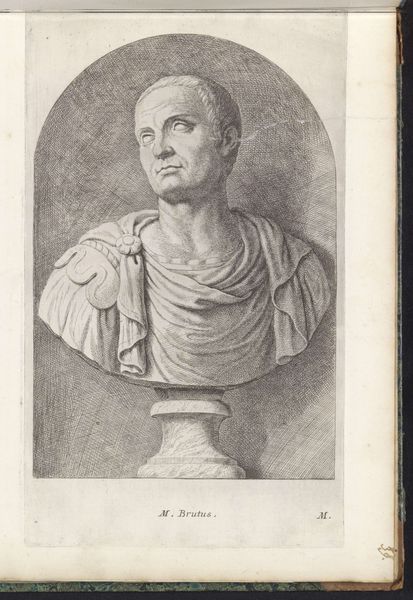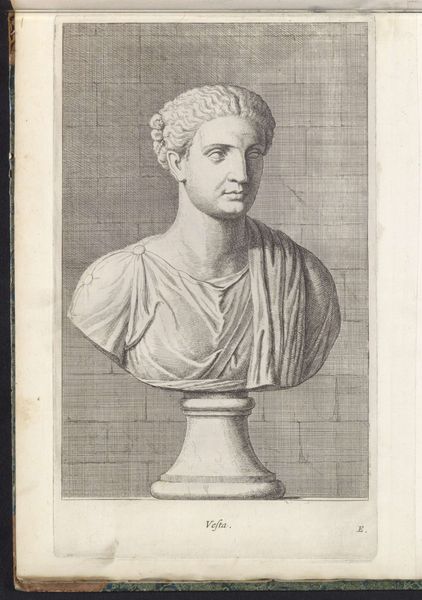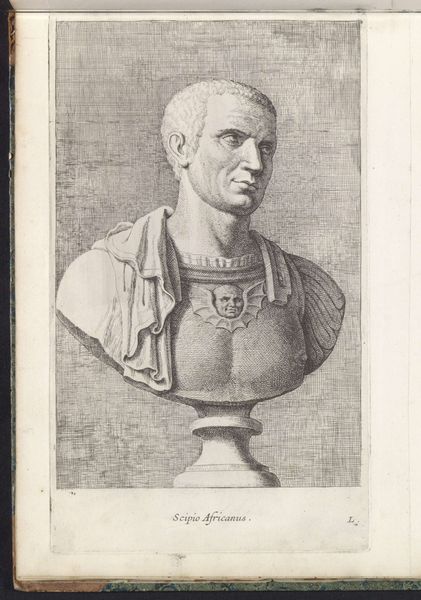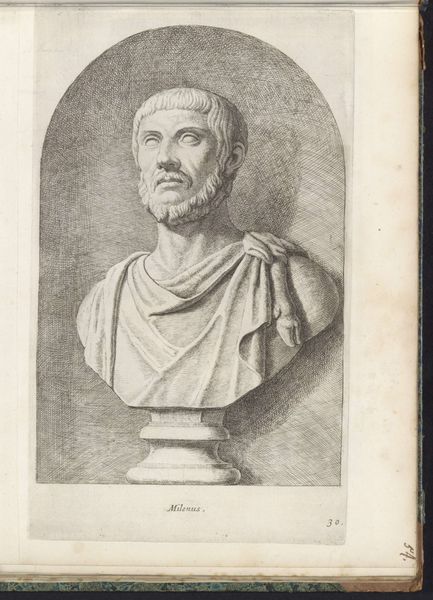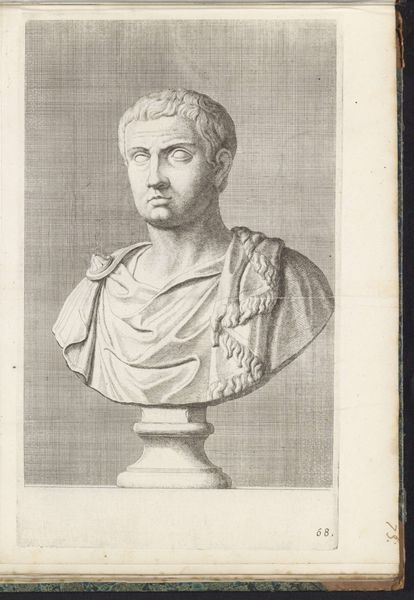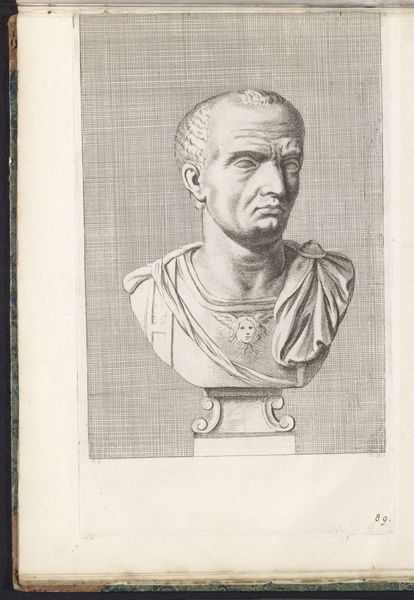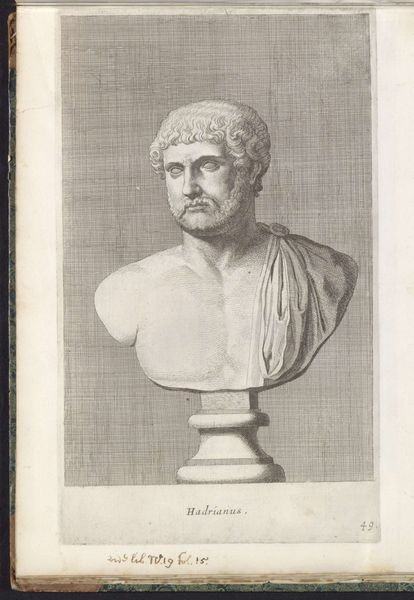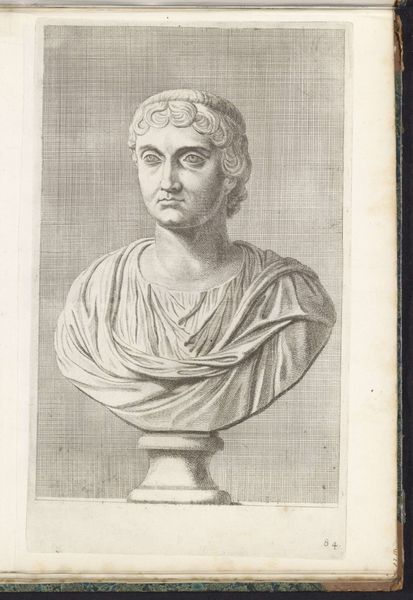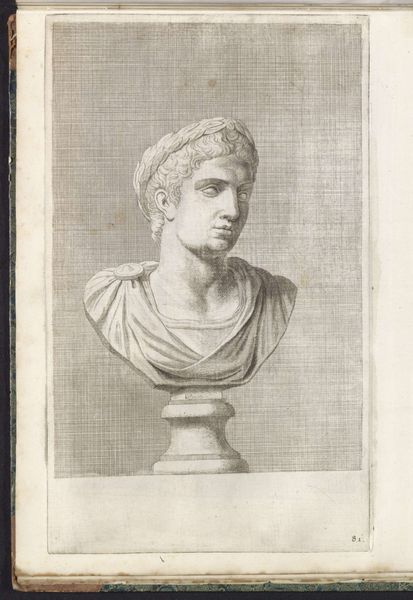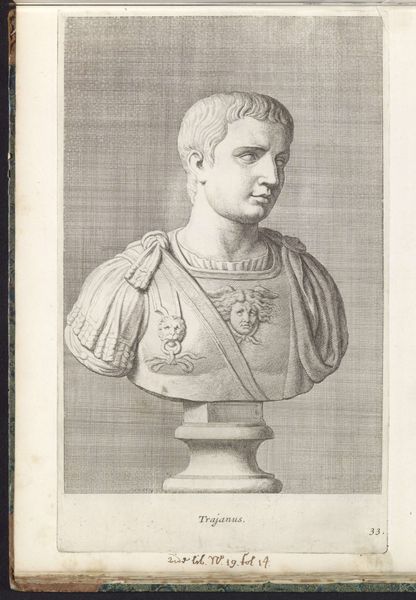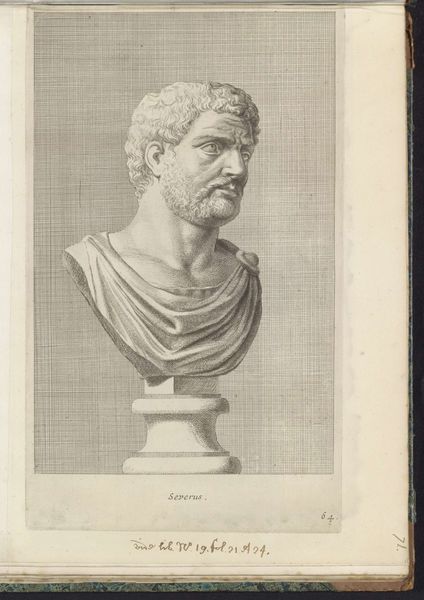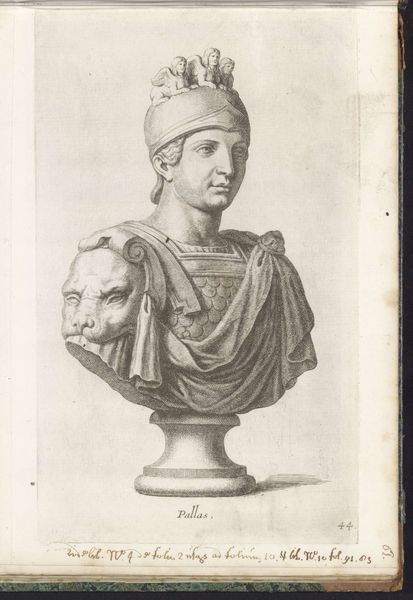
drawing, print, engraving
#
portrait
#
drawing
#
baroque
# print
#
figuration
#
form
#
pencil drawing
#
classicism
#
line
#
academic-art
#
engraving
Dimensions: height 325 mm, width 194 mm
Copyright: Rijks Museum: Open Domain
Curator: Here we have "Buste van een man in toga, naar links" – or "Bust of a Man in Toga, Facing Left," a drawing attributed to Hubert Quellinus, dating from somewhere between 1646 and 1670. Editor: Immediately striking – a very restrained aesthetic, almost austere in its lines. The figure seems composed and quite serious. It makes you wonder about the context of its creation. Curator: Indeed. Quellinus was working during a period of shifting artistic styles, a move towards classicism. This piece embodies that, echoing Roman sculpture, which enjoyed renewed appreciation among the upper classes and academics. We need to view this in its social and historical context. Editor: I find myself focused on the execution. The subtle shading achieved with engraving is impressive, giving depth and form with such limited tonal range. And the way he's rendered the folds of the toga, it really shows a master of the technique at work. Did Quellinus engrave it himself or was there a workshop? Who printed it? What sort of paper was used? Curator: Those are very valid questions. Engravings such as these had a practical function. They could be reproduced and circulated. Artists gained exposure. It helped standardize aesthetic tastes in certain echelons of society. Ownership and collecting habits would be linked to the image's dissemination. Editor: Exactly! We need to examine what made its production and distribution possible – and not isolate art from its social infrastructure of studios, tools and workshops! Even the way people would have encountered it impacts meaning, right? This piece challenges conventional boundaries. Curator: Undoubtedly. It served as a symbol of status and education but this image has been copied many times, cheapening it. The relationship between the individual and art's commodification is at the core of its later significance. Editor: Understanding how these kinds of artistic materials are produced provides an expanded notion of artistic skill – revealing it as dependent on production contexts and not reducible to simply the ingenuity of individual 'masters' like Quellinus. Curator: Very insightful. I find it is this layering of interpretations across time and space that brings depth and complexity to it. Editor: And seeing the piece in the Rijksmuseum gives one a totally new, richer insight in its layers of materiality and production too.
Comments
No comments
Be the first to comment and join the conversation on the ultimate creative platform.
